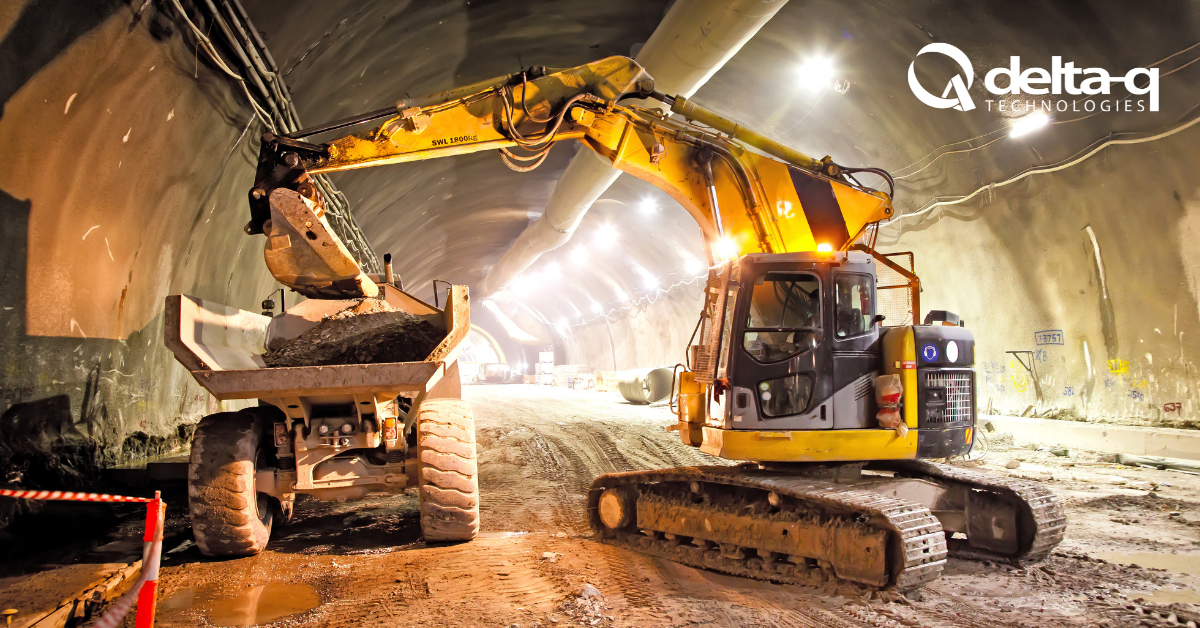
This is Part 2 of a blog series dedicated to the major drivers and enablers for electrification within the construction industry.
Construction equipment and machinery rely on either electric motors or combustion engines to operate. However, the former offers numerous advantages compared to the latter when working indoors—diesel-powered equipment produces significant exhaust causing several health and safety risks to operators.
Exhaust Health and Safety Risks
The primary dangers of operating gas or diesel-powered equipment are related to the workers’ inhalation of exhaust fumes—notably, carbon monoxide and particulate matter. Workers exposed to diesel exhaust are 40% more likely to develop lung cancer. Estimates project that over 3.6 million Europeans have been exposed to concerning levels of diesel emissions.1
Even though ventilation and filtration facilitate safer operation, upfront expenses and ongoing maintenance needs still present challenges.
The US Occupational Safety and Health Administration (OSHA) recommends the following precautions for the general operation of diesel engines to minimize pollutants:2
- Schedule and perform regular maintenance
- Install cleaner-burning engines, exhaust filters, and diesel oxidation catalysts
- Run diesel engines on specialty fuels or use additives
- Provide a clean air supply and ensure proper operation of ventilation systems
When operating exhaust-producing equipment and machinery indoors, OSHA’s guidance becomes even more essential for construction companies. However, adherence will increase maintenance costs, equipment downtime, and consumables (e.g., replacement filters).
Carbon Monoxide
A by-product of burning fuel is the production of carbon monoxide (CO)—an odorless, tasteless, and colorless gas capable of killing those who inhale it.3 When exhaust-producing equipment is used indoors, the minimized or complete lack of ventilation allows CO to accumulate—any operators or nearby workers risk poisoning.
Particulate Matter (PM)
Particulate matter (PM) or diesel particulate matter (DPM), common in diesel exhaust (DE), presents a significant health risk indoors. According to the Canadian Centre for Occupational Health and Safety (CCOHS), DE may contain toxic particles and chemicals such as:4
- DPM
- Soot (carbon particles)
- Carbon monoxide
- Nitrogen oxides
- Sulfur oxides
- Hydrocarbons
The National Institute for Occupational Safety and Health (NIOSH) and the National Cancer Institute (NCI) have released findings that diesel exhaust exposure increases lung cancer risks.5
Additional Health and Safety Risks from Gas and Diesel Equipment
Aside from the primary dangers of exhaust inhalation, operating gas and diesel-powered equipment indoors causes noise pollution and increases the risk of fuel spills and fires.
Ear protection can help mitigate long-term hearing damage. However, noise elevation on job sites decreases workers’ awareness and increases accident likelihood, potentially causing injury or death.
Electrification’s Benefits for Indoor Operations
Operating electric-drive equipment and machinery virtually eliminates most of the dangers that exhaust-producing counterparts introduce to job sites. There is no exhaust (or associated costs), noise pollution is minimized (or absent with smaller tools), and there are no fuels to spill or catch fire.
In addition to smaller equipment, advances in battery power have helped electrify heavier machinery and equipment (e.g., scissor lifts, forklifts, aerial work platforms, floor care). Even heavy construction machinery that previously required internal combustion engines can now operate on battery power.
Electrify Your Equipment and Machinery Lines
Original equipment manufacturers should consider developing electrically powered equipment and machinery to expand their product lines. Electrification presents clear, advantageous, and marketable benefits to worker health and safety compared to exhaust-producing alternatives. Additionally, it yields ongoing cost reductions.
To guide manufacturers through their electric transitions, Delta-Q Technologies brings a wealth of experience in designing, producing, and testing battery chargers and systems.
Want to learn more?
To learn more about the benefits electrification brings to construction machinery, visit our landing page.




